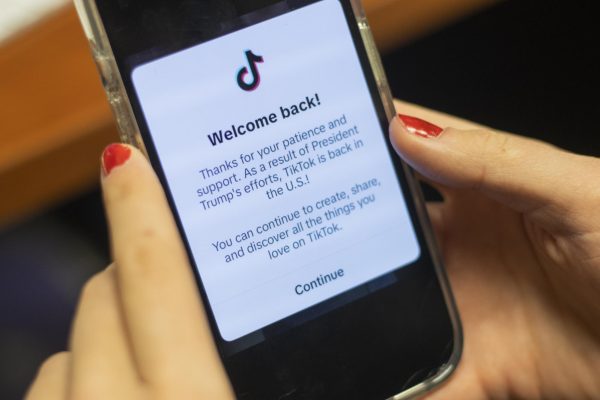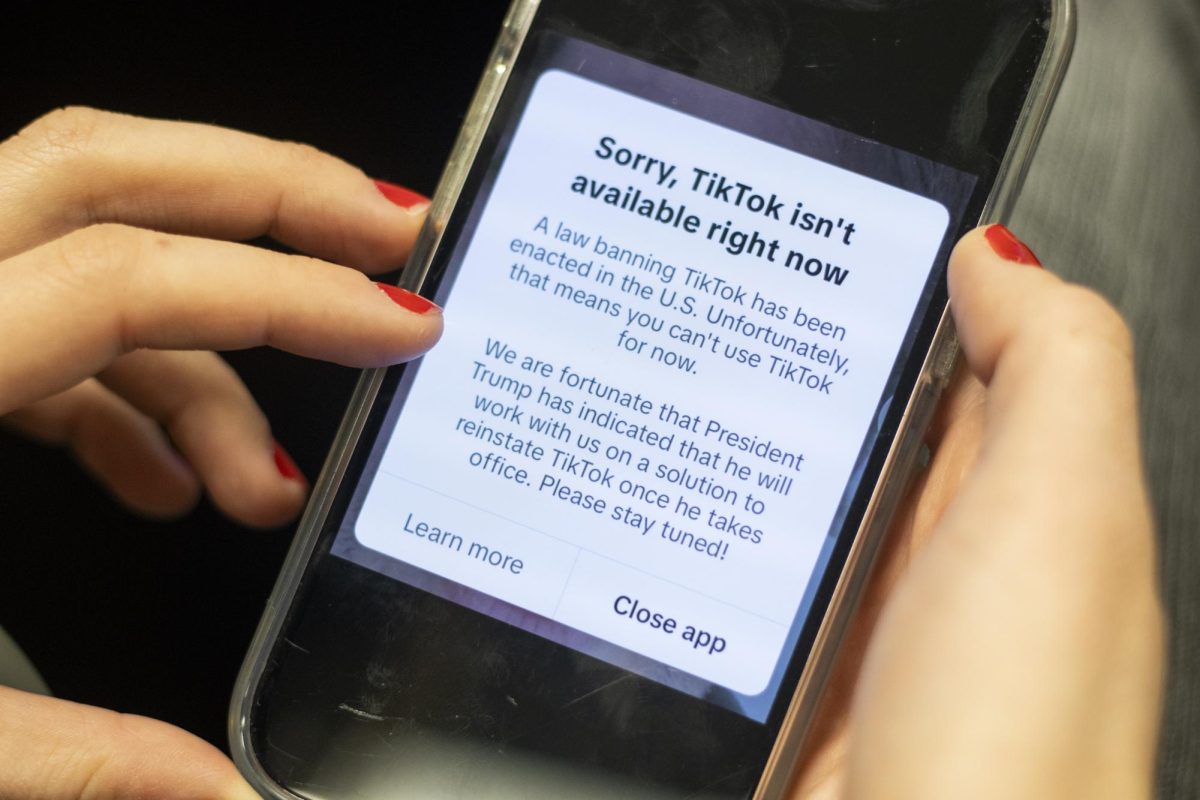After a meteoric explosion of popularity in 2020 during the height of the COVID-19 pandemic, it seemed like the reign of TikTok might have finally been coming to an end on the night of Jan. 18, when the app became unavailable to users in the United States. This purported ban followed months of bipartisan condemnation by concerned citizens and politicians alike, citing risks of national security compromises and worsening youth mental health.
From viral dance trends to content houses (still not entirely sure what that means) to the TikTok shop, the social media app has spent the better part of a decade playing an undeniable role in shaping the way in which people consume media. YouTube fame is a thing of the past, with viewers trading longer-form content for the quick dopamine hits delivered by TikTok videos or similarly competitive Instagram reels.
As I began writing this, the urge to take a break and let muscle memory guide me into the social media folder on my phone to open TikTok grew stronger by the minute. However, when I finally succumbed, I was still greeted by the message I had seen several times before:

On April 24, 2024, former President Joe Biden signed a bill into law that gave TikTok 270 days to find domestic ownership, facing the threat of a ban in the United States. The bill passed through both houses of Congress with bipartisan support, despite the fact that certain members who supported the ban still actively used TikTok to communicate with their constituents. Two hundred seventy days came and went, with TikTok seemingly making no progress in its search for new owners. In the meantime, users began to express panic that this new attempt to ban the app would actually be successful after multiple failed attempts. These attempts included President Donald Trump’s suggestion that the app be banned as a form of retaliation for China’s mishandling of the COVID-19 pandemic. I thought the pandemic was nothing more than a conspiracy theory to help Democrats win the election, but I guess the president must have changed his mind.
As frustrating as it was to be deprived of my daily dose of doom scrolling today, I could not help but feel a certain sense of relief. Why? On some subconscious level, I am alarmed by the fact that the action of opening a social media app has become so ingrained in my psyche that even knowing full well the app is shut down, I have repeatedly tried to open it. If that does not alarm you, it should.
As frustrating as it was to be deprived of my daily dose of doom scrolling today, I could not help but feel a certain sense of relief.
Furthermore, now that the app has been resurrected, with credit fully attributed to the valiant efforts of President Trump, I’ve noticed how much less time I spent aimlessly swiping on my phone. People love to hate iPad kids and their parents, but when they exhibit the same behavior as those technology-obsessed children (read: recording themselves crying about how unfair the world is), suddenly it is not an addiction, but rather, a healthy coping mechanism. Interesting.
Productivity and mental health aside, there are also people who depend on TikTok to sustain their livelihood, whether it be as a tool to market their small business or simply as beneficiaries of the creator fund. Thankfully for them, President Trump seems to have reassured TikTok executives sufficiently, leading them to grant access to U.S. users again less than 24 hours after revoking it.
In case you do not remember, Trump was actually the catalyst for the beginning stages of a TikTok ban when he cited serious national security concerns given that the parent company of TikTok is based in Beijing, meaning that, in theory, the Chinese government would have access to TikTok users’ data. Ironically enough, he did not comment on elected officials using the app that supposedly feeds data to a foreign government, his own campaign included. Apparently, it is much more important to prevent the Chinese government from finding out how to make TikTok famous cinnamon rolls and do the latest viral dance trend than it is to prevent them from having direct access to the campaign strategies of hundreds of politicians. Then again, like many other things, political utility seems to be the central factor in determining the government’s attitudes toward TikTok.
Like his denial of the “plandemic,” the president has changed his attitude toward TikTok, instead advocating for an extension before the ban is enforced so that TikTok can be sold. This tactic would theoretically mitigate the concern for national security. Perhaps his change in views might have something to do with his repeated assertions that TikTok allowed him to win the youth vote by a massive margin. Regardless, the president is not alone in questioning the role TikTok played in shaping the perspectives of youth voters, whose support of President Trump in 2024 was somewhat unexpected.
However, a politician flip-flopping their viewpoints isn’t that uncommon. What is truly worrisome is how TikTok has repeatedly chosen to associate the protection of the app with President Trump. Whether it be reassuring users that they are working with the president to find a solution or thanking him in their return announcement, there seems to be a disturbing desire to augment users’ political opinions in favor of the newly elected president.
Although the app has historically been somewhat non-partisan, it seems as though a desire for self-preservation has prompted executives to align themselves with a certain political agenda. Although it is too soon to tell how this partnership between TikTok and the president might impact what content users see, this is likely only the beginning of an increase in political partisanship among ultra-wealthy tech CEOs. Given how social media is capable of influencing people, users must be cognizant of how they absorb content going forward. If dwindling productivity and potential mental health were not enough to alarm you previously, perhaps the threat of subversive manipulation by the ultra-rich will finally convince you to finally overcome your addiction.



